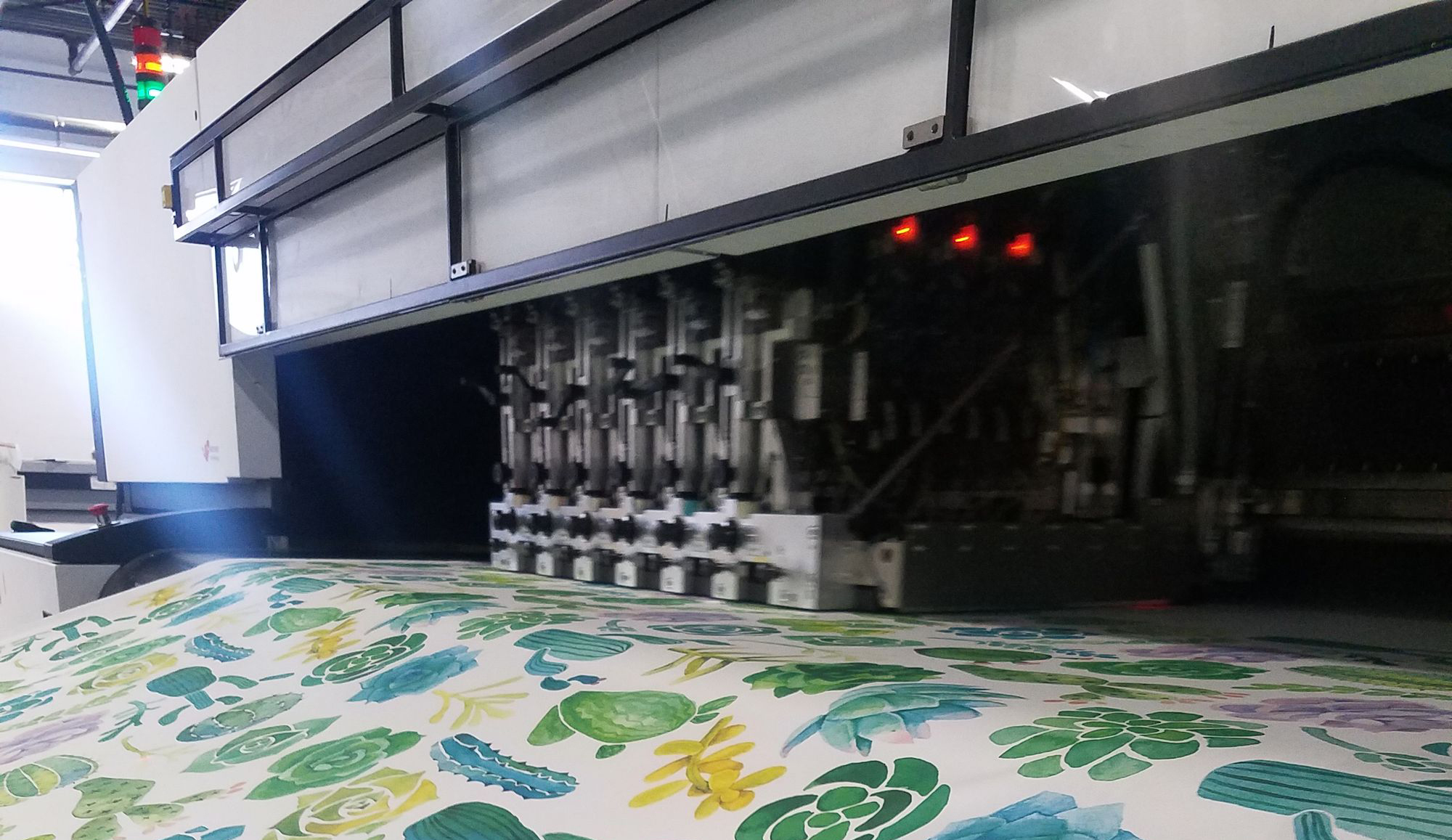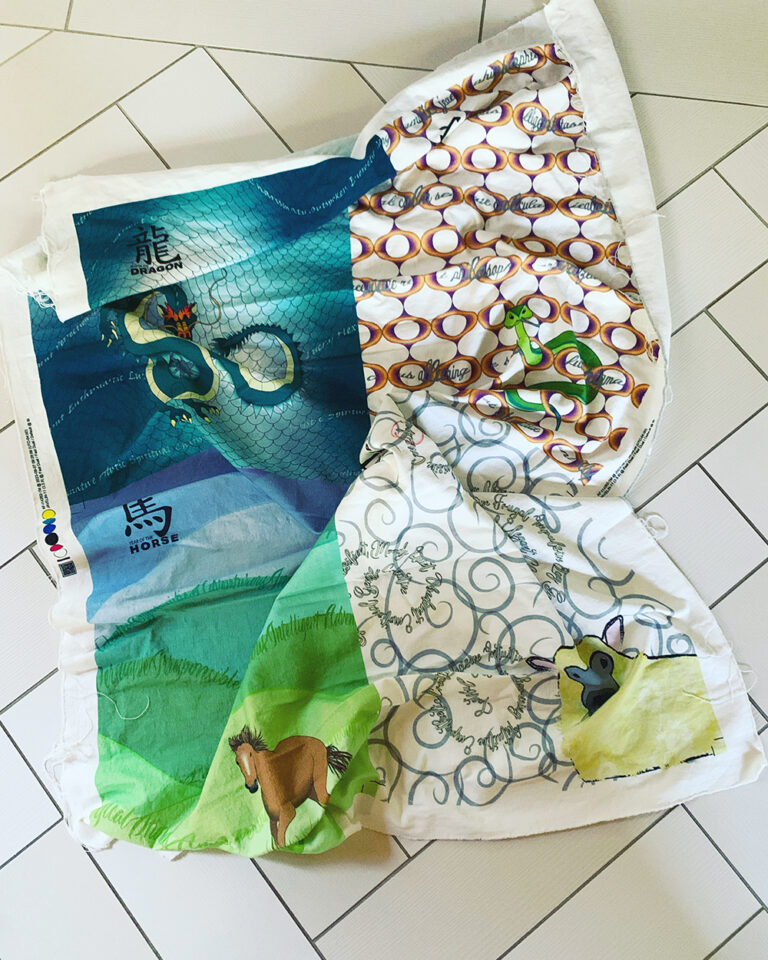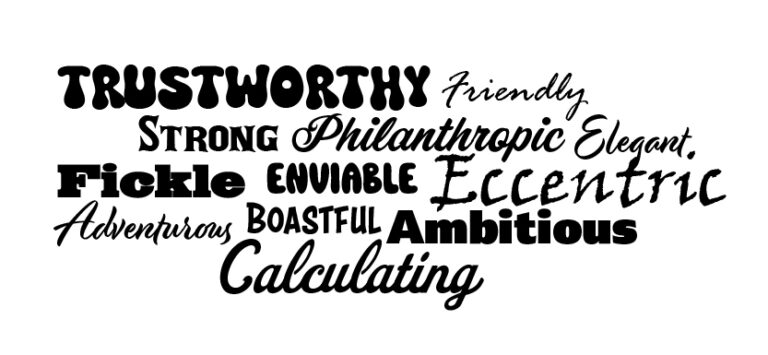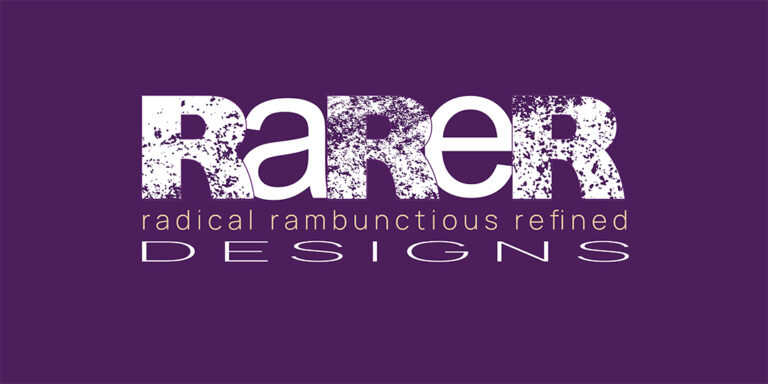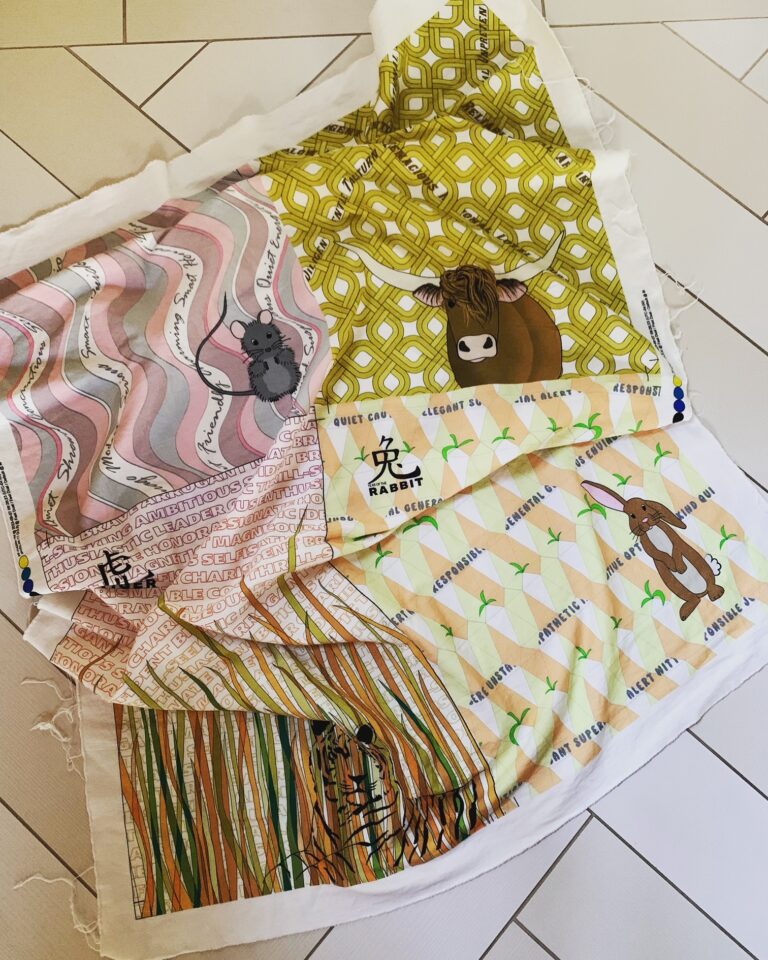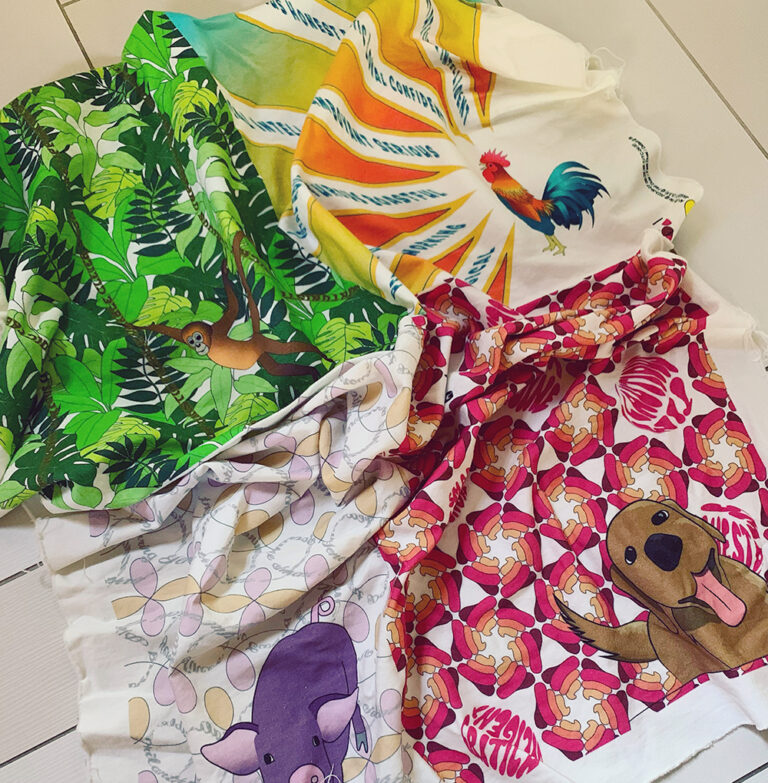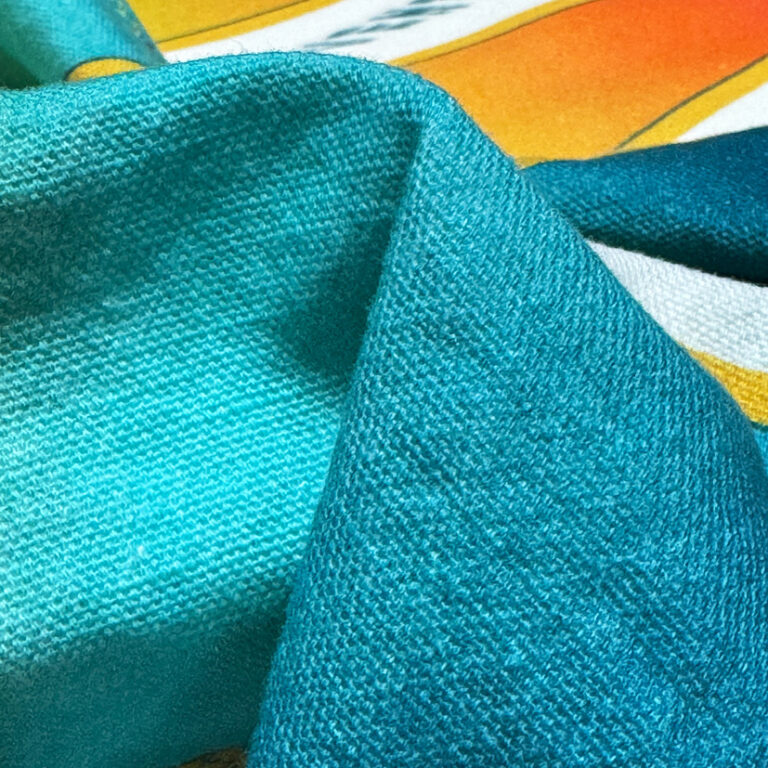Fabric Printing … so many choices!
Like I have said, besides fonts, I love colors, vibrant colors. So I wanted a printing method that could provide great colors and gradients.
There are several methods of printing on fabric, However, since Rarer is a small business and only requires small batch prints, the reasonable printing methods are screen printing, sublimation printing, heat transfer printing, cool transfer printing, reactive printing and digital pigment printing.
Screen printing is one of the oldest methods. Much of the world’s fabric production is done using this method. It’s a fast printing method that can produce large quantities quickly and efficiently with vibrant colors and works on a wide variety of fabrics. However, it’s not practical for small scale printing and small business production. Also, it’s resource intensive, requiring the creation of screens for every color used in every pattern, thus making it quite expensive. Each new color adds to the cost and gradients are not possible. So not a choice for Rarer.
Dye Sublimation prints the design onto a special transfer paper using sublimation ink. The design is then transferred onto the fabric from the paper using heat and pressure to bond the ink to the fabric. The heat and pressure causes the sublimation ink to transform into a gas and permeate the fibers of the fabric, creating a permanent, high-quality image. However, this method only works on synthetic fabrics. Since the dishtowels are a cotton linen blend, this method would not be a choice for Rarer.
Heat transfer printing is done on paper first, and then is transferred to the fabric surface by passing the paper and fabric through hot rollers. The main problem with this method is that the dye does not penetrate the fabric deep enough, So colors fade after washes, and the transfer may peel or crack. Sometimes the fabric feels rough after the printing is done. At times the outline of the transfer paper becomes visible on the fabric surface. Since dish towels are harshly used and washed several times, the poor colorfastness of this printing methods makes this a less than ideal choice for Rarer.
Cool transfer printing is a newer process that transfers a design from paper to fabric without the use of heat. Cool transfer printing has many advantages. The process does not require any heat to transfer the design to the fabric and also uses less water, dye, and energy, proving to be an environmentally-friendly alternative to other printing methods. Cool transfer printing makes it possible to achieve high quality, photo-realistic images to be printed on fabric while still maintaining cotton’s soft handfeel. However, since cool transfer printing is new compared to other traditional printing methods, the cost and performance are barriers to widespread industry adoption. However, the production speeds, limited environmental footprint, strong colorfastness, and print quality make cool transfer printing an attractive option for the future.
Digital Pigment Printing is fast becoming one the most popular methods of fabric printing. This is a versatile, printing method that applies pigments (fine particles of color) directly to the fabric using precision print heads. It is then passed through a heat/press oven that sets the color onto the fabric. Benefits include small batch prints, low costs, no pre-treatment, no water is used in the process and no color restrictions with photo realistic prints. However, the ink uses a binder to adhere the color onto the fabric. This sometimes produces a stiff fabric and there have been issues with crocking and wash-fastness. Due to these issues, this would not be a choice for Rarer.
Reactive dye and acid dye digital printing utilizes digital ink-jet style printers to print designs on fabric. A reactive coating is applied to the fabrics, creating a reaction that helps the reactive or acid dyes bond to the fabric. Through the process of steaming, washing, and drying a chemical reaction between the coating and the dye creates a long-lasting bond with the fabric. Consequently, it can be washed many times and resist fading. It has a higher color yield so allows for brighter color vibrancy and rub fastness. Reactive dyes work well on all cellulose fibers such as cotton, linen, rayon, hemp, bamboo and on many natural fabrics and acid dyes work best on protein fibers like silk, wool, and nylon. So with all these benefits, Reactive Dye printing is what Rarer uses to print its dish towels!

